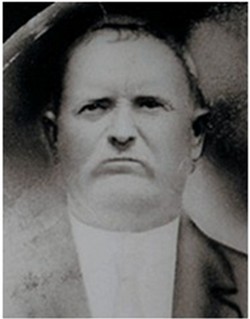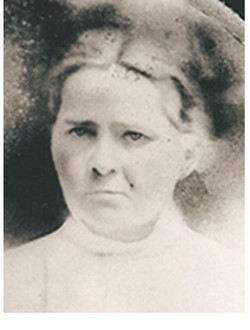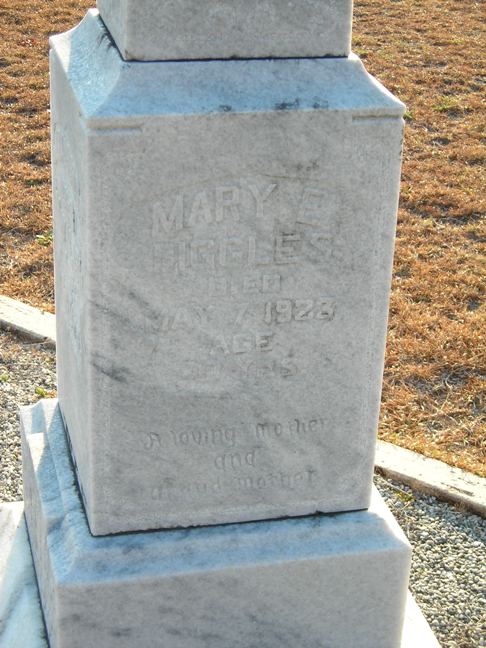Eugene Madison Giddens (1878-1946)

E.M. Giddens was a farmer in the Rays Mill district for many years. He was also active in the politics of Lanier county, serving as Ordinary in 1923, and as a Lanier County Commissioner in 1927. His brother-in-law, David Jackson Rigell, was a well known merchant who operated one of the earliest stores at Rays Mill (now Ray City) and later operated a mercantile in Lakeland, GA. His parents were William A. K. Giddens and Fannie E. Baskins.
Eugene Madison Giddens and Georgia Ida Rigell had a large family. Daughter Mary Luelle Giddens was born at Ray City, GA on November 22, 1915. The Giddens home was located near Ray City on the Milltown & Ray City road and was cut into Lanier County when it was created in 1920.
In 1911 E.M. Giddens achieved the distinction of bringing in the first bale of Sea Island Cotton to be auctioned at the Savannah Cotton Market. A record 2.8 million bales of cotton on 4.9 million acres were produced in Georgia that year. It was the peak of the Georgia cotton economy.
Americus Times-Recorder,
August 19, 1911
First Sea Island Cotton is Sold in Savannah
Brings 27 Cents Pound|
Savannah, Ga., Aug. 18. – The first bale of the new Sea Island cotton crop was marketed here today. It was sold at auction and brought 27 cents a pound. It was grown by E. M. Giddens, at Rays Mills, Ga. The bale graded extra choice and weighed 463 pounds.
According to Acorn Fabrics, “Sea Island is the ultimate in luxurious cotton fabrics, the finest and rarest type of cotton in the world. In fact it’s so rare that by some estimates [today] it makes up only 0.0004% of the world’s cotton supplies – which should give you an idea of how expensive it is, too!” The highly desirable Sea Island Cotton had originally been produced in the coastal areas of Georgia and South Carolina, but was also grown in inland areas. In 1895, Green Bullard, a prominent planter in the Ray’s Mill area, had more than 30 bales of Sea Island cotton on hand.
The southern cotton economy was rooted in slavery, and in the post- Civil War period in sharecropping and tenant farming.
In the antebellum period, prior to the construction of railroads, pioneer settlers in this section like Lasa Adams would take their cotton to Newport, Florida, going in company with several of his neighbors, some of whom perhaps lived miles away from him, each man taking provisions with him, and camping and cooking by the wayside.” Norman Campbell sold his cotton at the port of Magnolia, near present day St. Marks, FL. Cotton was also hauled to Centre Village at St. Mary’s River on the Atlantic Coast.
In Berrien County, Elijah Cook operated one of the earliest cotton gins open to the public market, “his gins being operated by horse power.” By 1847, Noah Griffin was operating a cotton gin at Flat Creek. James M. Baskin, early settler of the Ray City area, owned many enslaved African-Americans who worked at his farm and operated his cotton gin. Even after the Civil War ended slavery, cotton was the major agricultural concern in the South. In 1869, Thomas Ray and William Roberts set up a mill for ginning and carding cotton on Beaverdam Creek downstream from Ray’s Mill. From that point on the creek came to be known as both Beaverdam Creek and Card Creek.
Cotton continued to be an important crop and defining force in life for Georgia and the South well into the 20th century. At one time, Georgia raised more cotton than any other part of the world, and in 1936 farmers in Georgia sold $67 million dollars worth of cotton. (Georgia Historical Society). William Devane‘s place, a six-horse farm near Ray City, GA was said to produce a bale of cotton to the acre; The estate in 1909 included six tons of cotton seed. In 1906, Berrien County sent Malcolm L. McMillan as a delegate to the Southern Cotton Growers’ Association, and the newly formed Georgia 4-H Club held a state-wide cotton growing contest for boys. In the early 1900s, Andrew Turner was a cotton buyer and farmer of Ray City, GA, and later served as a City Councilman. Jonathan Perry Knight, another local cotton buyer turned politician, went on to serve in the Georgia Assembly. William T. Staten, farming the Alue Plantation at Cat Creek near Ray City, was a member of the state finance committee of the Southern Cotton Association in 1908. In 1911, Abraham Leffler, a former resident and merchant of the Rays Mill District, operated a cotton factory in Savannah, GA. Later on, The J.H. Swindle Gins and Warehouse [were] another concern of benefit to the entire section. Plants [were] located at Ray City and Barrett, being among the most up to date in south Georgia. Mr. Swindle was a buyer of cotton and cotton seed. Benjamin P. Jones, the principal banker in the 1911 opening of the Bank at Ray’s Mill, started his career chopping cotton for 25 cents a day; after the Civil War he was a cotton buyer before entering the banking business.



The boll weevil first appeared in Georgia in Thomasville in 1915. Thereafter cotton production began to decline at an alarming rate.
The Boll Weevil in Berrien County, GA
The Boll Weevil had already reached Brooks and Thomas Counties by the summer of 1915. The following summer, 1916, Boll Weevils were found in Berrien on the farms of Dr. Lovett and Jim Patterson at Sparks, GA. The arrival of the Boll Weevil ended the reign of cotton as the county’s main industry, and forced farmers to shift more to feed and sustenance, or “hog and hominy,” farming.
Ray City resident Josh Jones wrote August 23, 1918, “The boll weevil ruined all of the long [Sea] Island cotton, and the short staple will average about half a crop.
State-wide cotton production plummeted from an historical high of 2.8 million bales in 1914 to merely 600,000 bales by 1923 (Georgia Land Sales)
The weevil, cotton’s greatest enemy, not only cut production levels … but also increased the mass migration of white and black tenant farmers from rural Georgia that had begun during World War I...According to the Georgia Crop Reporting Service, by 1957 the state produced only 396,000 bales on 570,000 acres, and the numbers continued to drop (New Georgia Encyclopedia). As late as 1983, Georgia produced only 112,000 bales of cotton on 115,000 acres of harvested land. However, mechanized agribusiness and an effective boll weevil eradication program have since returned Georgia Cotton production to near historic levels.
Related Posts:
- Milledge Dewey Wood and the First Cotton Blooms of 1912
- Lowndes Immigration Society, 1867
- Luelle Giddens and the Euclidian Club at G.S.W.C.
- More on the 1887 Family Feud at Rays Mill, GA
- David Jackson Rigell ~ First Postmaster of Ray’s Mill? Maybe Not!
- David Jackson Rigell ~ Merchant of Ray’s Mill, GA
- Early Automobiles in Berrien County, GA




